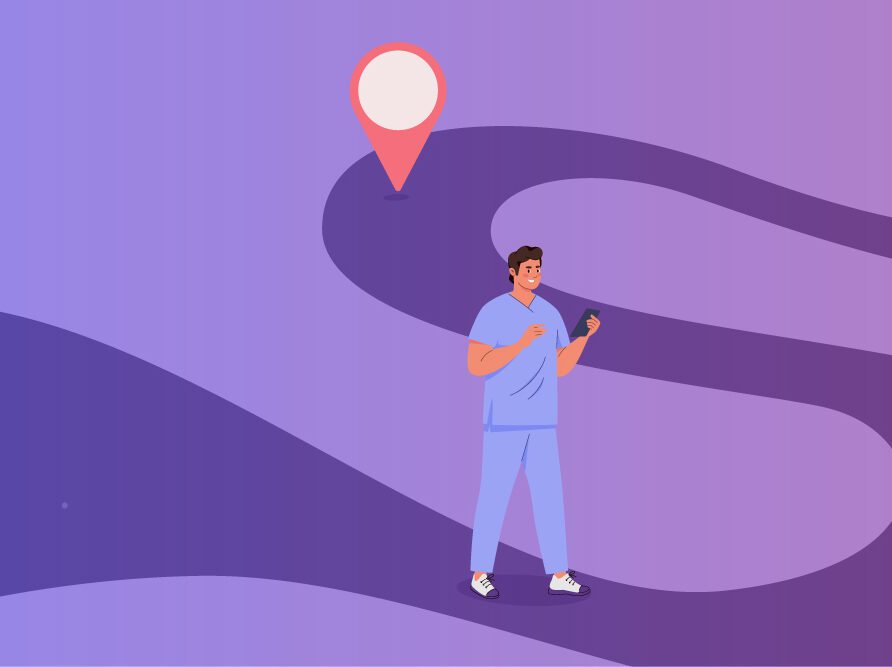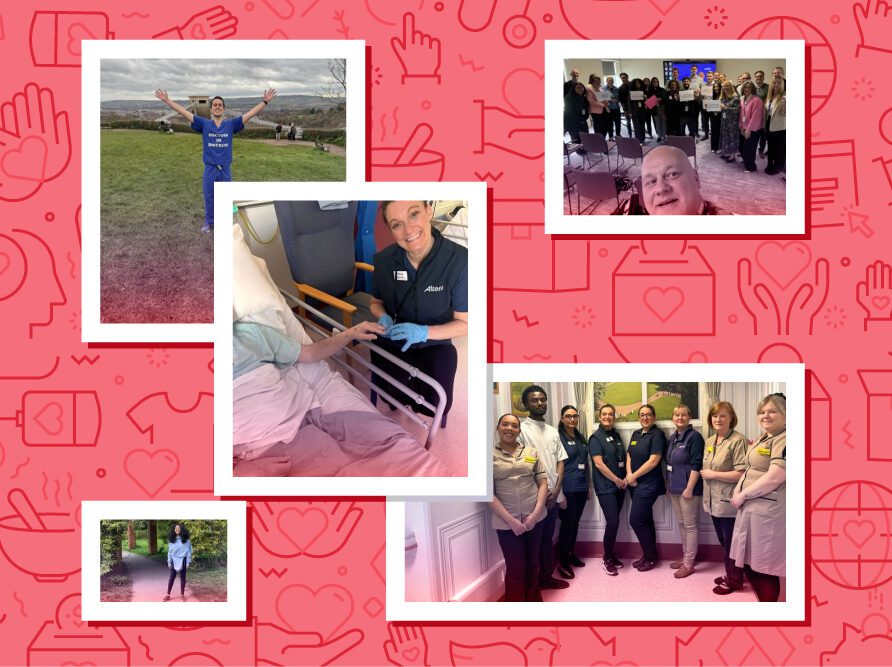INSIGHTS
First-of-its-kind Virtual Fracture Clinic
Maidstone and Tunbridge Wells NHS Trust (MTW) developed a leading-edge Virtual Fracture Clinic (VFC) within Altera Digital Health’s Sunrise electronic patient record (EPR). This workflow management solution has saved eight days of admin time per month, revolutionising data collection, delivering accessibility and streamlining the patient pathway—while inspiring other trusts and departments.
The VFC and its purpose
The VFC is a service that expedites access to orthopaedic care for patients attending A&E across MTW, which includes two hospital sites and a Minor Injury Unit (MIU). The service provides an end-to-end digital pathway from admission in ED through to inpatient, theatre and outpatient services, such as physiotherapy. The VFC is the first time a fully digital pathway for fractures has been deployed in an EPR, helping streamline the patient pathway, improving their experiences with minimal disruption to patients and staff.
Saved eight days of
admin time per month
Revolutionised
data collection and
accessibility
Streamlined the
patient pathway
Challenges with the manual referral process
Before the pathway was digitised, the referral process relied on complex spreadsheets and manual data entry. It took at least a day for staff to collate information, contributing to delays in patient treatment and inefficiencies like transcription errors, which also posed a patient safety threat. Reams of paper also required printing, which slowed the treatment process for the 1,000 patients referred each month.
Patient information was also inaccessible to staff outside the VFC that may have subsequently treated the patient. This meant that if a patient returned to ED, the clinical staff were unable to view the outcome of the initial VFC triage, leading patients to wait unnecessarily in ED before teams could advise them to contact VFC instead. This meant patients had to repeat themselves to different staff members and their care experiences were disjointed.
Implementation of the digital pathway solution
These issues called for a secure, robust and accessible workflow management solution and that was compliant for information governance to enable the team to report data and manage patients efficiently. It was necessary to improve the referral process as well as patient treatment management and experience. To ensure these goals could be achieved, the trust configured a VFC with its Altera Digital Health Sunrise EPR, digitising the entire pathway from ED to inpatient, theatre and outpatient services. The solution was co-developed by the EPR team and the VFC clinical project team, with input from service users and clinicians.
This clinically driven approach meant that throughout development, the existing service was able to continue as usual. As the solution was configured with the existing EPR, there was minimal disruption to staff and patients during development. Once the solution went live, this also meant benefits to patients were recognised immediately.
“Having such a flexible EPR has enabled us to innovate and completely transform pathways such as the VFC. This is the first time the whole VFC pathway has been deployed within an EPR and having the entire digital fracture clinic embedded in Sunrise has enabled major reductions in admin time when it comes to filling in forms. This is helping patients to be triaged and receive the right care more quickly as they move through the hospital, transforming the patient experience. Orthopaedics is one of the biggest contributors to the elective backlog, so being able to streamline this process and manage the fracture referrals has been a huge help in releasing staff time back into elective care. We have been empowered to continually build tailored digital solutions without causing major disruption to clinical workflows, transforming the way we support our clinicians and deliver care to our patients.”
Jane Saunders,
Programme Director for EPR and Digital Transformation at MTW
Benefits and improvements achieved through the VFC
The solution has resolved numerous issues, including inefficiency, data quality and inconsistencies in patient care. The IG-compliant system captures referral and results data, which can be extracted to provide reports that identify where additional service needs arise and where training can be improved. This has helped with capacity and demand modelling, enabling the trust to make data-informed decisions that support better patient flow, which will support
smoother discharge from hospital.
Introducing the system has reduced the duplication of printing, scanning and data entry, saving the Trust £8,574 per annum in printing costs. Additionally, all records created within the VFC can be accessed in the EPR by any clinician at the trust, supporting continuity of care. Approximately 75% of all fracture referrals are now digital, which is saving up to 8 days’ worth of admin time per month. Furthermore, Sunrise gives VFC staff direct access to inpatient records, increasing efficiency by ensuring the patient is on the correct care pathway,
improving continuity of care and overall experience.
The development of a referral solution within the Sunrise system has had a significant impact on how clinical information is collected, with the project pushing the boundaries of the EPR’s functionality beyond what was previously thought possible. For the first time, the configuration team used complex coding to link information across referrals and create a streamlined workflow that enabled more efficient patient care management—all through purpose designed patient lists that allowed for scheduling. This is considered best practice in the region, with MTW sharing its work with neighbouring trusts that also use Sunrise EPR.
Ambitious next steps
Based on the success of the referral solution, the VFC has set an example for other departments that have adopted similar approaches, highlighting the transferability of the project. The Rapid Eye Access Team members are keen to explore with the EPR team simpler ways to process internal referrals. Adopting the design of the VFC solution, they will soon be using Sunrise to view and triage referrals. Phlebotomy is also exploring the use of patient lists to enhance its blood collection processes, drawing from the VFC solution. Moreover, knowledge gained from the project is being considered for application in diabetes, MIU clinics within ED, and across other therapy departments.
About the Client:
Maidstone and Tunbridge Wells NHS Trust
The trust first went live with Altera Digital Health’s Sunrise™ EPR in May 2021, activating the solution across all 32 adult inpatient wards, three Paediatric areas, ED, order communications and outpatient services, making it one of the most substantial go-lives in the UK. In the 15 months since the initial go-live, there have been many advancements in the trust’s digital transformation, all centred on EPR, which is core to the trust’s 10-year digital transformation strategy. This includes processes to support a virtual fracture clinic, point-of-care testing, doctor handover, sepsis and many other department-specific configurations. Overall, this has brought about a fundamental shift in ways of working across the trust, transforming clinical pathways and the patient care experience.
Related Insights
Article
Partnering in pursuit of excellence
Jay Adams
Article
From zoomers to boomers: Technology and the patient experience
Dr. Laura Kohlhagen
Article
Article
EPRs at the heart of urgent and emergency treatment centres: Delivering safer, faster care
Dr. Constantin Jabarin, CCIO
Article
Article
A doctor’s journey in health IT: Then, now and into the future
Dr. Constantin Jabarin, CCIO
Article
A new era of Sunrise: What to look for in 25.1
Shanna DeLeo
Client Story
Bolton joins up and accelerates district nurse referrals across secondary and community care using Sunrise EPR
Bolton NHS Foundation Trust
Article
The power of analytics on your bottom line
Michelle Durbin
Article
How Altera gives back through volunteering
Linzi Hill












